The Bar Muscle Up. Probably one of the most technical and fundamental exercises in calisthenics. In this post we will be talking about the weighted strict bar muscle up, going through all the muscle up technique specifications. So if you want to improve your strict muscle up technique feel lucky, because that’s your guide.
To start with this post, I would like to mention that the technical specifications provided will be taken into account referring to the current strict competition rules. Therefore, we must avoid any kind of kip and make the muscle up a one-way movement.
I’ve been doing muscle ups for more than 6 years and one thing I can tell you is that my technique has varied a lot. I’ve tried all kinds of shoulder widths, grips, plates positioning, pelvic position… Among others, and in the recent years I’ve come up with a form that works well (for me) in terms of lifting that weighted muscle up as clean as possible.
The aim of this post is to look through and discuss all the little details that have helped me improve my strict muscle up. Moreover, I will provide some exercises that can be very useful to improve your muscle up technique.
The structure of the post will be the following:
– Grip and hands width
– Plates positioning and chain length (+ exercise)
– The swing: avoiding the kip part 1
– Pelvic position and shoulder extension: avoiding the kip part 2
– The ascend and transition (+ exercise)
And without further introduction, let’s start.
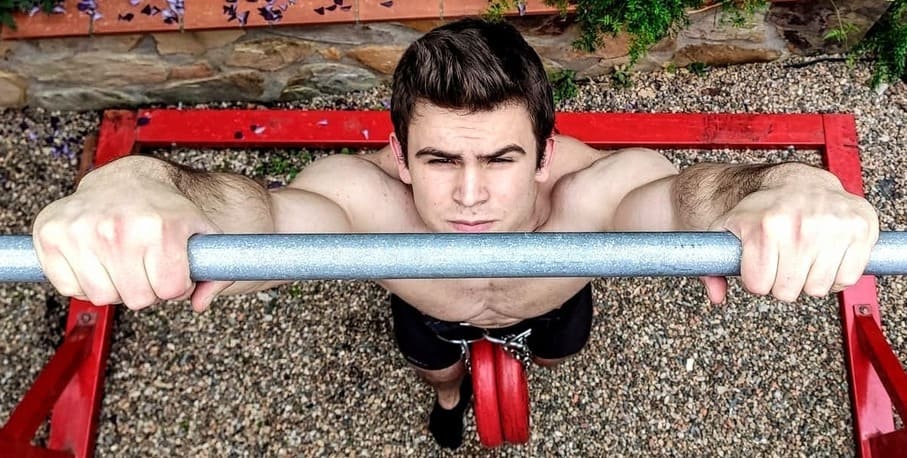
The Muscle Up grip and hands position
As well as I mentioned in the Pull Up Post having a solid grip is crucial, and even more when we are talking about the Muscle Up. You need to have a high and strong grip in order for the transition to be easier and be able to accelerate as fast as you can in the pulling part.
And well, the overhand grip in the only one that meets those two factors, as performing a neutral grip would make it harder for the transition and a false grip would make it impossible to pull at your maximum velocity. This is why, with no doubt at all, you must grip the bar with an overhand.
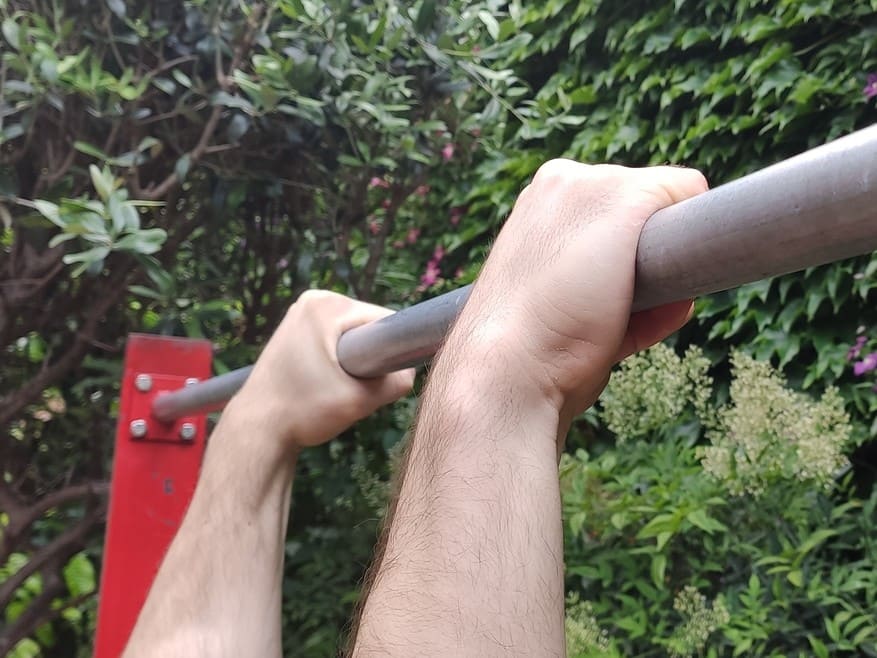
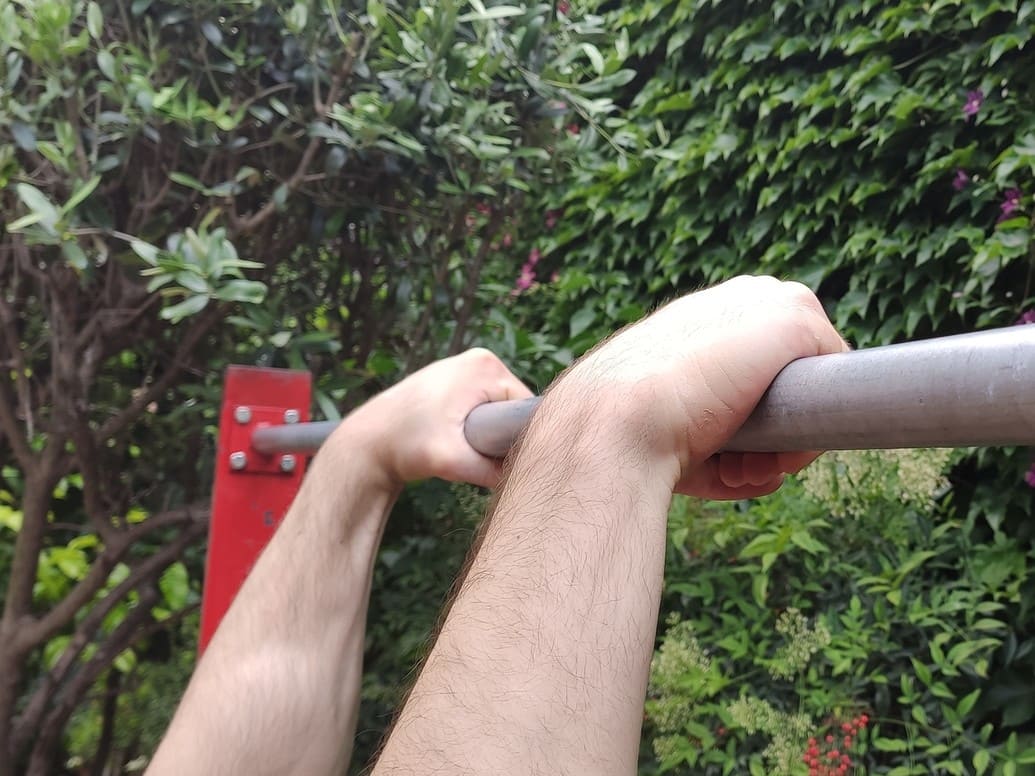
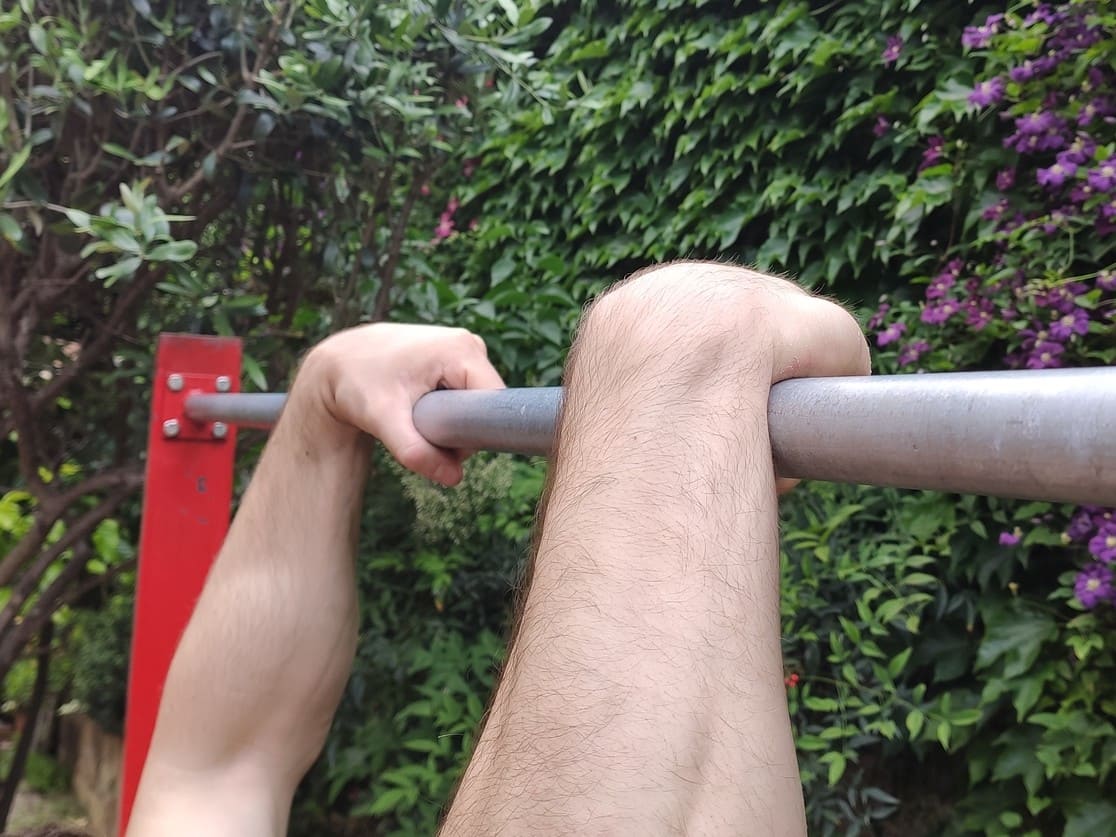
And what about the grip width? Well, here we need to take into consideration two main things:
Which width makes you start the fastest?
Which width makes you do the fastest and best transition?
In the past I used to do the Muscle ups very wide, but in the past year I’ve completely changed the width to shoulder width and I feel so much better. This is because of the transition. A closer grip will make it easier and faster to place the chest over the bar and complete the muscle up. Everyone will be more comfortable with one width or another, but my recommendation would be to have a shoulder width or slightly wider.
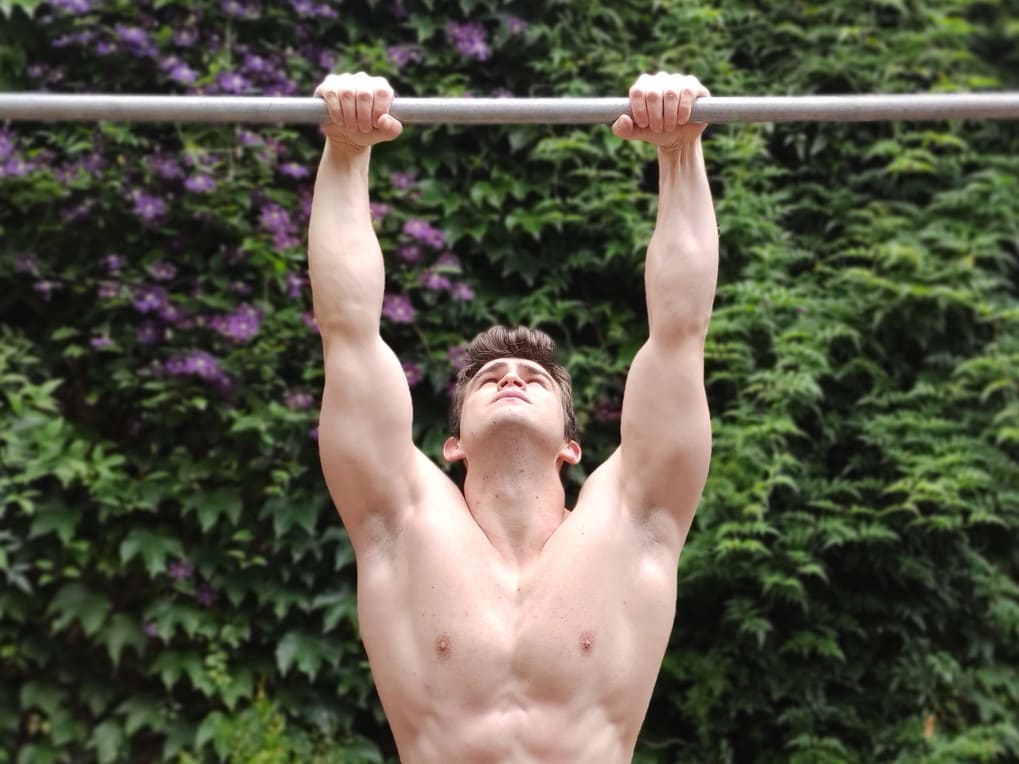
Shoulder width bar grip
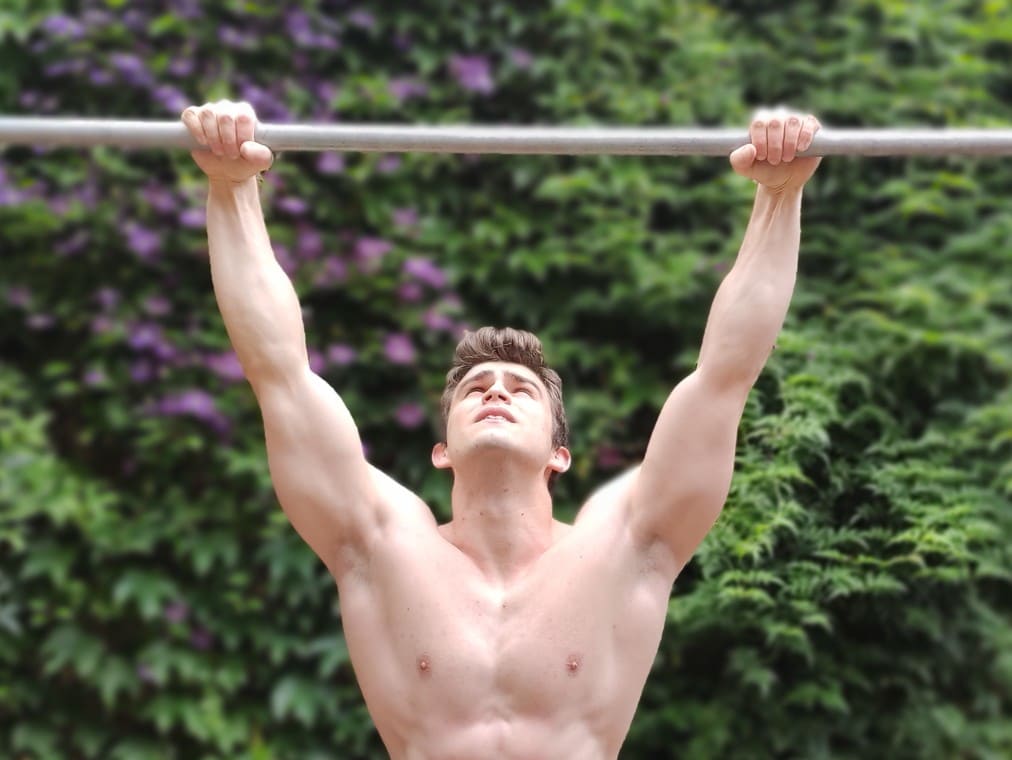
Wide width bar grip
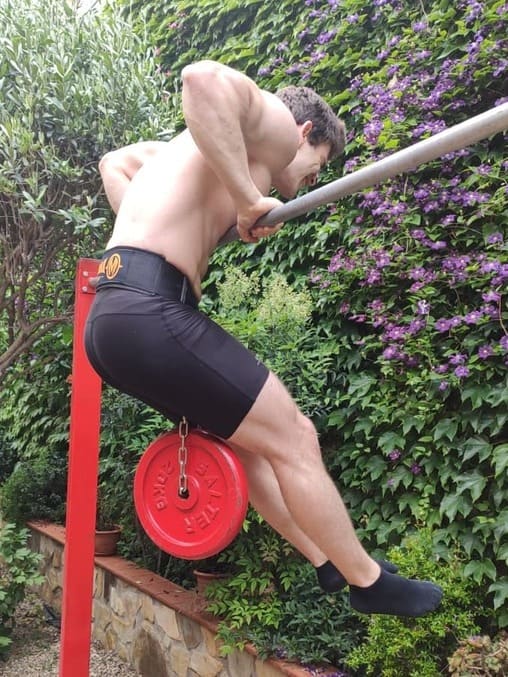
Plates positioning and chain length
Plates or kettlebell? For sure, I would pick plates, and even more if we are talking about heavy weights (+20 kg) because then it’s very hard to control the weight. Uncontrolled weight equals a possible failed muscle up.
And what bout if I need or want to do it with a kettlebell? Well, then the easiest it’s going to be to place the kettlebell in front of your legs and make the chain as short as possible, even to the point that the kettlebell and the belt are touching. This way we will make the kettlebell stick to our body and avoid the weight swinging in the transition.
Going back to the plates, where should we place the plates? I think we all agree in NOT placing them behind our legs, as it would counter the muscle up mechanics and make the transition super hard. The real question is between if we should place them in between or in front of our legs. My advice would be to place them in between although there are very good athletes that place them in the front. Let me explain you my point of view.
Placing the plates between your legs and squeezing them will make you tighten your legs and glutes, which is something we want to have in order to perform the movement. Also, will make it possible to control the weight along the whole muscle up and avoid it from separating from our body, especially in the transition part. But again, this is something that you must try and find out what works best for you.
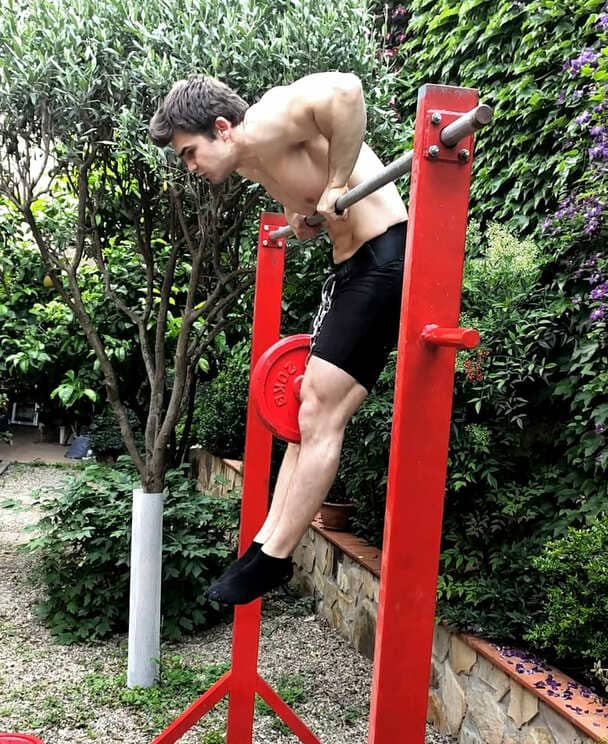
The chain length should be the one that makes the plate’s mid hole be slightly above our knees. That is a physical thing, because bringing the plates lower will make it harder to control, and higher may not counterbalance enough in the transition part.
There is one exercise that can really help you get the habit of tightening your legs and squeezing the weight. This exercise is doing Muscle Ups with an object in between your legs without the belt, so you must squeeze it while doing the Muscle Up in order to keep it in place. For example for me, when I am warming up I usually do the lower Muscle Ups weights without the belt.
Placing any other objects such a small ball can also work perfectly.
The bar Muscle Up swing
The swing is such an important factor in the Muscle Up that needs to be taken seriously, as it will make the difference between a good technique Muscle Up and a bad or failed Muscle Up.
This is because the swing and the kip are closely related, as doing a bigger swing will demand a stronger kip, and vice versa. That said, you have the key of the muscle up swing: make it as small as possible. And I really want to emphasize that because that is one of the most important tips I can give you. Find below an example:
Let’s have a quick look at the physics, paying special attention to our center of mass. The main handicap of the bar Muscle Up is that we need to overcome the bar in order to finish the movement. If we swing too much at the beginning, then we have to move our center of mass a lot backwards in order to overcome the bar. Making this horizontal displacement so fast will induce a kipping movement in order to compensate. On the other hand, having a small swing won’t induce that strong kip and we will be able to compensate by just squeezing the weights firmly with our legs.
To make it clearer, see both images below:
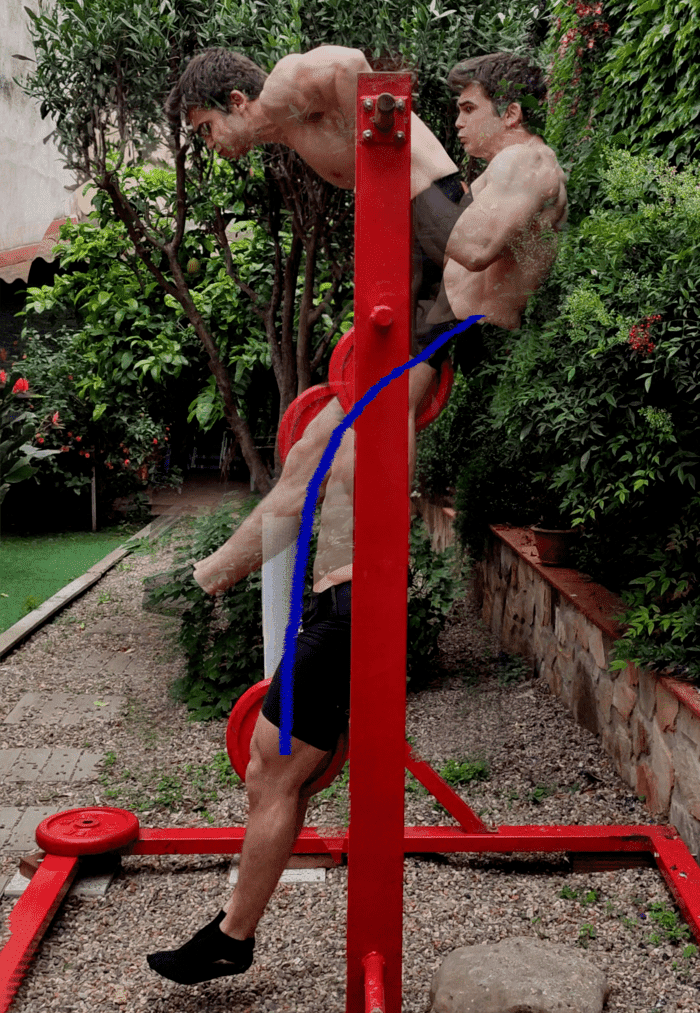
Small swing, small displacement
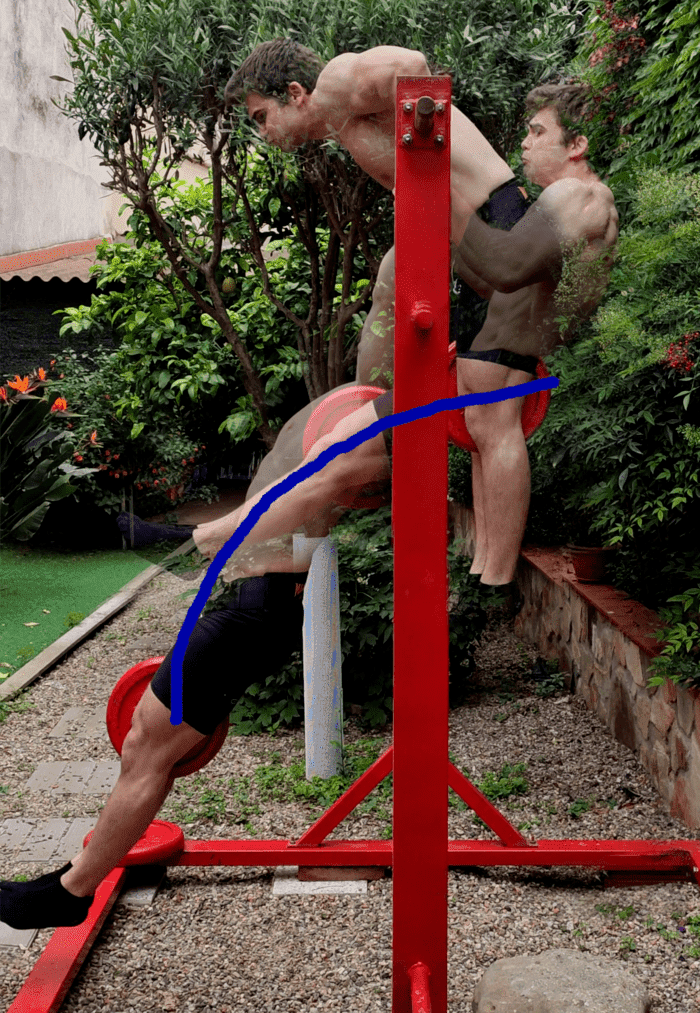
Large swing, large displacement
So on more time, I would recommend to place your platform really close to the bar (nearly under) and avoid that excessive swing.
To end this section, I would like to mention the fact of doing an extra swing or doing no swing before starting to pull. To do a strict Muscle Up you need to swing and start with your arms fully extended. Taken that into account, if you start the first swing with your arms extended, there is no need to swing twice in order to start, as maintaining the neutral position while swinging requires scapula activation. Therefore, I would just drop and go, with no extra swings.
The starting point of the pull part
In this section we will be mainly focusing in two factors: the pelvic position and the shoulder amplitude. To start, I want to have a look at the Anterior Pelvic Tilt (APT) and the Posterior Pelvic Tilt (PPT). I think the easiest way is to see some pictures:
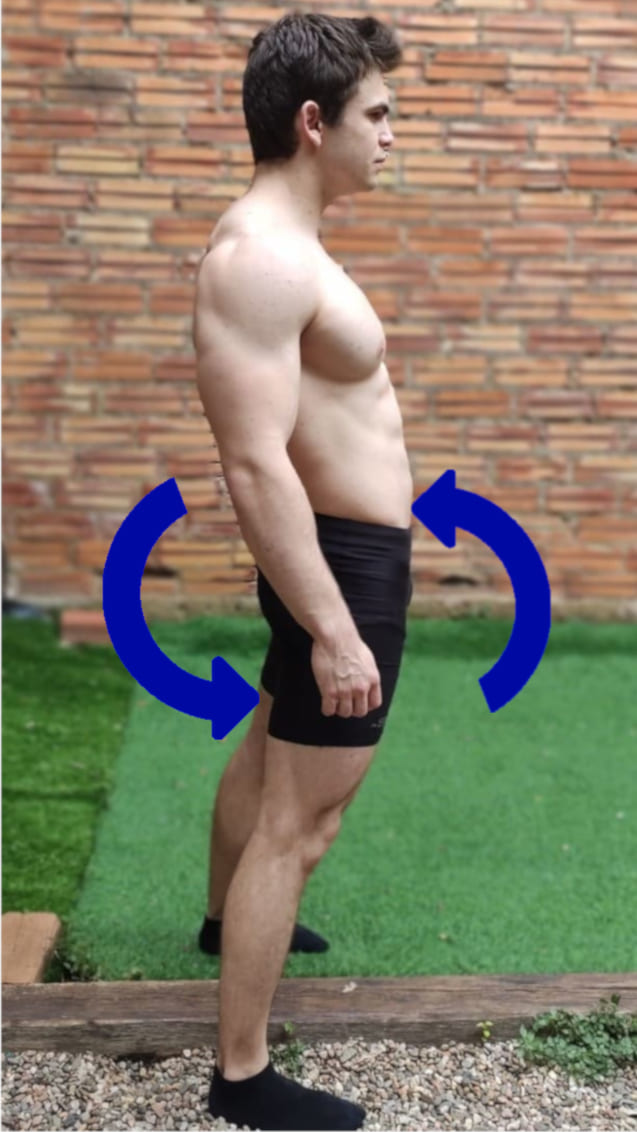
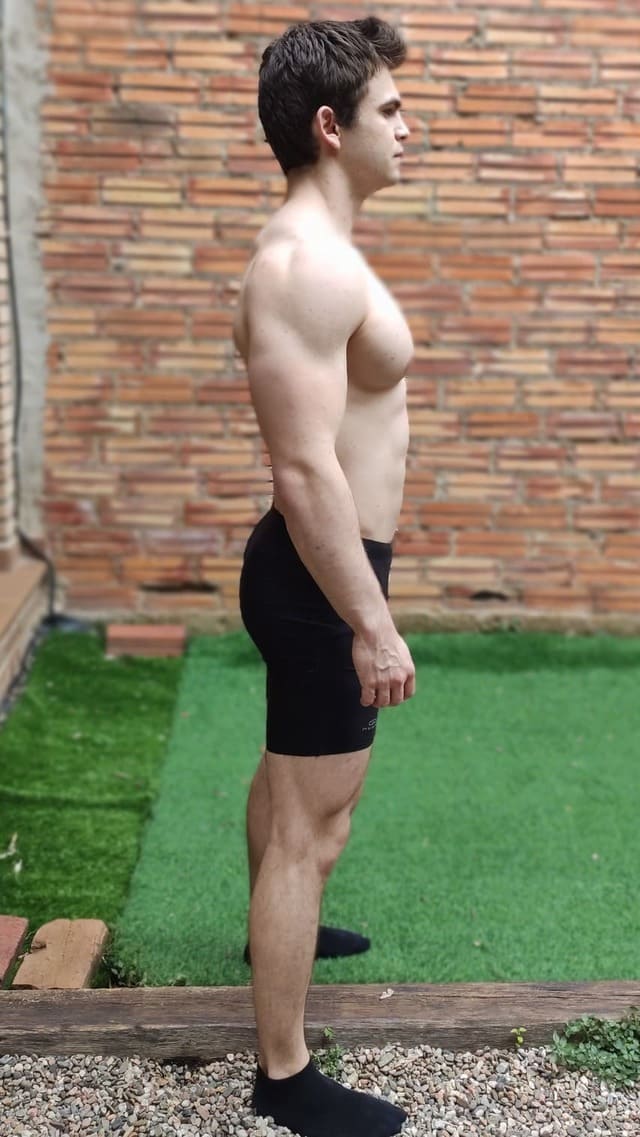
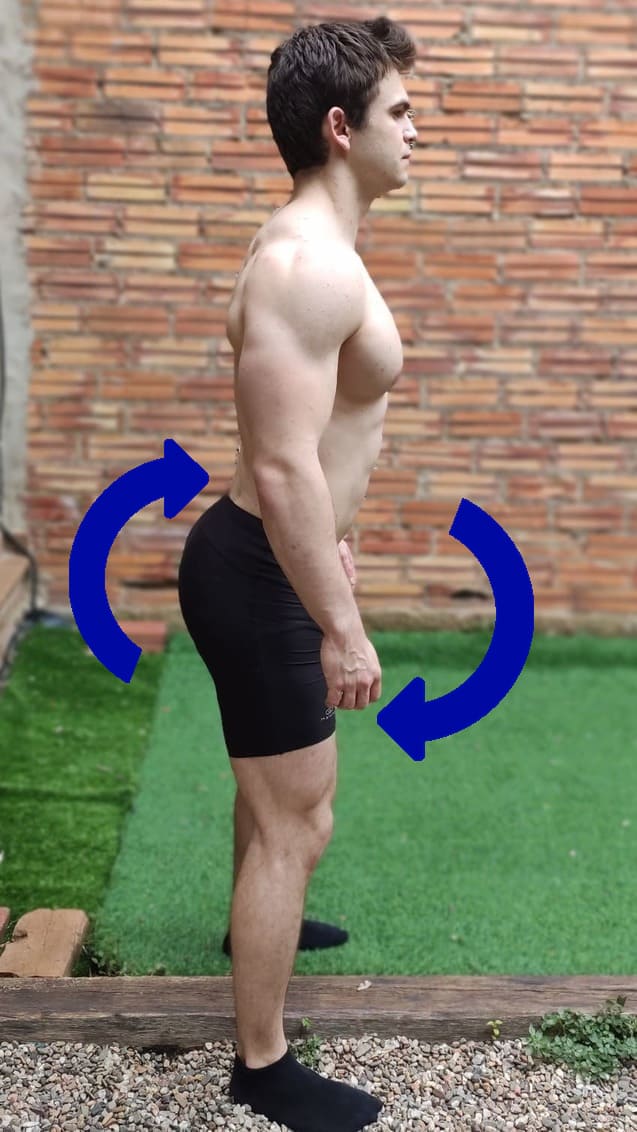
Pelvic Position on the Muscle Up
Any change from PPT to APT during the Muscle Up movement (from leaving the box or platform until overcoming the bar) will be considered as kipping. Therefore, we must avoid any APT along the movement and stay in the PPT or a neuter pelvic position.
That said, I would suggest you to start in a slight PPT position and solid core in order to avoid extending your hips at the beginning of the pull (switching the pelvis to APT). Now it makes even more sense what we commented in the previous section about the swing, because having big swing will make it very hard to maintain this position. On the other hand, for smaller swings it will be an easier task.
Let’s have a look between a kipped Muscle Up and a PPT Muscle Up:
Shoulder amplitude during the Muscle Up
About the shoulder amplitude I have to say that you should start in a neutral position. Starting the Muscle Up with protraction (hiding your chest) is tipicaly counterproductive and will lead to a decrease in the initial muscle up acceleration part.
In the beginning it may be a little hard to hang from the bar with PPT and normal scapula position but once practiced for few weeks becomes and habit. See what looks like starting with protraction:
Head Position During the Muscle Up
About the head position there is one thing you must know about. There are athletes that look upwards to the bar, and others that look forward. What is the difference?
The main difference is that if looking up to the bar may induce going to a PPT position and, therefore, the kip. If looking forward, you have better control of the pelvic position. That is also something you must try and see what works the best on you.
The ascend and the bar Muscle Up transition
Muscle Up Pulling Part
Along the ascend the legs will be tightened and pushing forward in order to overcome the bar, not many secrets here. The pulling intention should be the same as when doing a high pull up: pull as high as you can.
And I want to emphasize that because in the past I had the feeling that I was pulling really strong at the beginning and when I got closer to the transition I just didn’t pay that much attention. You should have the intention to accelerate along the whole pull, pulling harder as higher you get. Yes, the starting part of the pull it’s really important, but having the mentality of strong transition is crucial.
An exercise that can help you improve that is the progressive Muscle Up. You start at slow speed, and pull stronger progressively as you go up, so when you are at the transition you are doing max force.
Bar Muscle Up Transition
About the transition the best tip I can prove is being aggressive. Once reached the height pull yourself towards the bar as strong as you can. Having the bar right under your chest should be enough to perform the transition and complete the Muscle Up. Practicing this and keeping in mind fast transition may avoid many muscle up fails.
Let me illustrate the difference between doing a fast and aggressive transition and a regular transition:
The grip needs to rotate around the bar along with your body. That has an easy explanation, as not changing the grip in the transition will make it much harder for you to finish the pushing Muscle Up part. The best pushing wrist position it’s going to be the one where your hand is in line with your arm. Moreover, rotating your hands in the Muscle Up transition will make it easier to place your chest over the bar and complete the aggressive transition.
Doing this dynamically while moving around the bar may be difficult for some athletes but it’s something important to work on. See the difference between wrist rotation and no wrist rotation:
An exercise I would recommend is not doing the dip part of the Muscle Up: end the exercise with your chest over the bar. Doing this, will make you pay attention to the transition and get the habit of really placing the chest over the bar. Moreover, if you have any kind of overload or injuries in the pushing muscles it’s something you can skip. Also, this can help you focus on the dynamic wrists’ rotation along the transition part.
See an example of this exercise below:
And that would be the end of this technical strict Muscle Up analysis. Hope you learned something and helped you improve your Weighted Muscle Up technique. If you have any questions, feel free to ask in our forum.
Similar Posts: